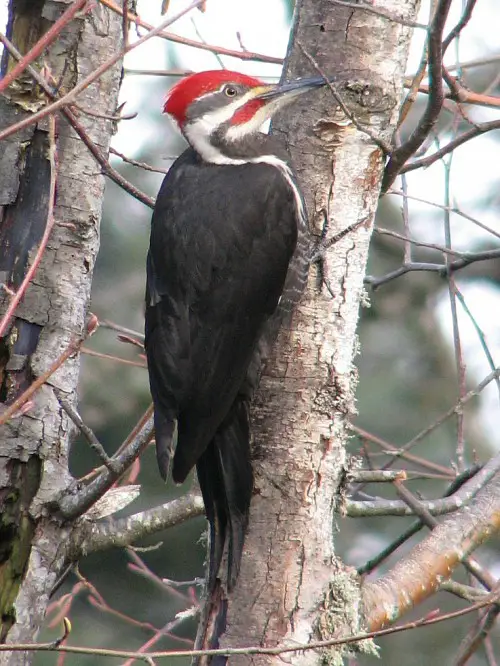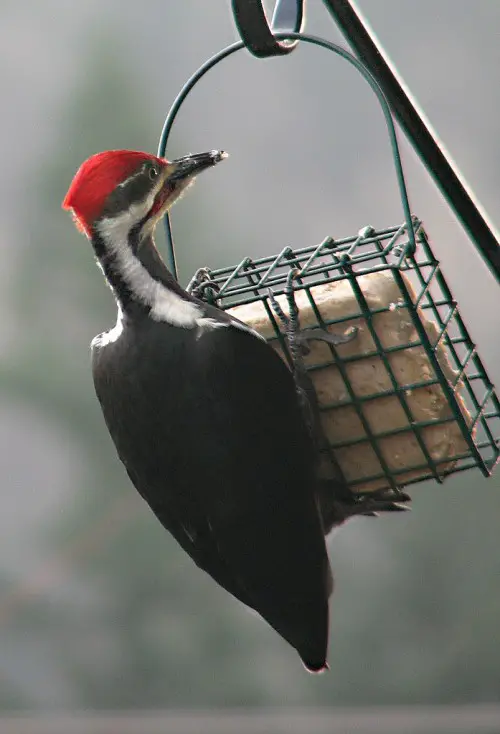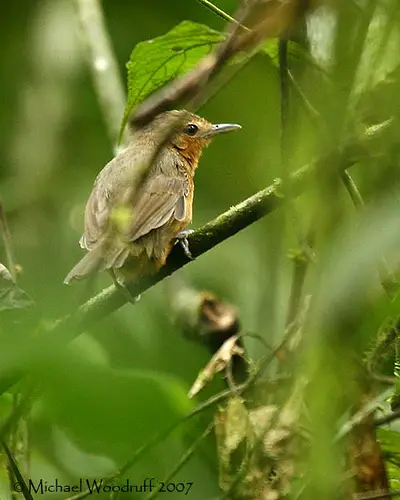Pileated Woodpecker
The Pileated Woodpecker is a very large bird of the North American Continent, which means they can be found in Canada, all the way down to Florida, and from the East Coast of Nova Scotia to California’s West Coast.
Appearance
A very large bird, the Pileated Woodpecker is almost as large as an American Crow. They can grow to almost 50 centimetres, and has a maximum weight of 350 grams. It’s feathers are overall black in color, including the upper part of the bill, with white wing linings, and a white line going from the bill, across the cheek and down their neck. Both males and females have red crests, which is also a useful way to tell them apart: the males’ red crest starts from the nape, with the females’ starting further back, plus only the males have red ‘mustache’ stripes on both sides of the face. Adult birds also have yellow eyes. It is interesting to note that this is the only living large North American woodpecker which is black with a red crest. The Pileated Woodpecker is often mistaken for Ivory-Billed Woodpecker of the Southeastern United States and Cuba, and the Imperial Woodpecker of Mexico. Unfortunately, these two latter birds are close to extinction.
Assorted Behavioral Patterns
The Pileated Woodpecker finds sustenance by chipping out large roughly rectangular holes in trees to search for insects, with a preference for the Carpenter Ant. The bird has a long tongue to extract ants from tunnels. It will also eat other insects such as the wood boring beetle, as well as fruits, berries, and nuts. Suet and bird feeders are also known to be visited.
Dead trees are a preferred choice of the Pileated Woodpecker, where it will excavate a large hole for a nest with multiple entrance holes to escape predators, usually every year in different trees. These holes, made by the males in April, will attract a female for mating and raising their young. Of note however, that these large holes can sometimes cause smaller trees to break in half. The average clutch size is around four to six eggs, incubated by both parents. Once the eggs have hatched, both parents feed their young by regurgitation. Fledgling begins after 24 to 30 days, and lasts till September at the least. When Autumn comes, the young emigrate and wander till the next Spring, where the cycle repeats.
The holes made by all Pileated Woodpeckers become good homes in future years for a lot of forest song birds, once they are abandoned. Until that time , Pileated Woodpecker pair will defend its’ territory throughout the whole year in all seasons. Territory is declared by drumming on hard surfaces including trees and utility poles at 14.5 to 16.8 beats per second. This is further helped by the fact that Pileated Woodpeckers are monogamous, meaning that they stay with the same mate for life. However, the birds have been observed living in nest boxes at an elevation of fifteen feet off the ground.
This unassuming bird is the inspiration for the cartoon character of Woody Woodpecker, and its population safely in the ‘stable’ zone ensures its’ presence all year round.




